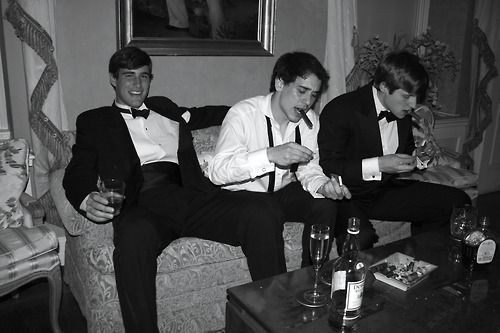Fashion is one of the most powerful forms of self-expression, and throughout history, each decade has brought its own unique flair. From the rebellious looks of the 1950s to the minimalism of the 1990s, clothing has always reflected the cultural, political, and social climate of its time. Let’s take a stylish stroll down memory lane and explore how fashion has evolved through the decades. style evolution
1920s: The Roaring Twenties(style evolution)
The 1920s marked a dramatic shift in women’s fashion. Gone were the corsets and heavy fabrics of the Victorian era. In their place came flapper dresses with dropped waists, fringe, and sequins—perfect for dancing the Charleston. Women cut their hair into sleek bobs, wore bold lipstick, and embraced a newfound sense of independence. For men, the “Gatsby look” took hold: pinstripe suits, fedoras, and slicked-back hair reigned supreme.
1930s: Elegance and Sophistication(style evolution)
The Great Depression meant fashion became more conservative and practical. However, Hollywood glamour heavily influenced style. Women wore bias-cut dresses that hugged the body, high necklines, and longer hemlines. Fur stoles and gloves were popular accessories for those who could afford them. Men leaned into structured suits and wide lapels, often mimicking the look of movie stars like Clark Gable.
1940s: Utility and War Influence(style evolution)
World War II left a mark on every aspect of life, including clothing. With fabric rationing in place, styles became more utilitarian. Women’s clothing featured shoulder pads, nipped waists, and A-line skirts—creating the iconic hourglass shape. “Victory rolls” and red lipstick became symbolic looks. After the war, Christian Dior’s 1947 “New Look” reintroduced femininity with full skirts and cinched waists.
1950s: The Golden Age of Glamour(style evolution)
Post-war prosperity led to a fashion explosion. Think poodle skirts, fitted sweaters, and cat-eye glasses for women; greaser leather jackets, cuffed jeans, and slicked hair for men. Hollywood icons like Marilyn Monroe and James Dean became style templates. This decade saw the rise of more tailored, feminine silhouettes and the beginning of youth culture’s impact on fashion.
1960s: Revolution and Rebellion(style evolution)
Fashion in the 1960s was all about breaking the rules. The early ‘60s had a polished, mod style (think Jackie Kennedy and Audrey Hepburn), while the later years embraced counterculture. Mini skirts, bold prints, go-go boots, and psychedelic colors took center stage. The youth-driven movement also brought about gender-fluid experimentation and a rejection of traditional norms.
1970s: Boho Meets Disco(style evolution)
If there’s one word for the 1970s, it’s eclectic. The decade saw a mix of styles—from hippie and bohemian with bell-bottoms, fringe vests, and tie-dye to glitzy disco fashion with jumpsuits, metallics, and platform shoes. Icons like David Bowie and Diana Ross inspired fearless fashion experimentation. Individuality was in, and rules were out.
1980s: Bigger, Bolder, Louder(style evolution)
The ‘80s turned the volume all the way up. Shoulder pads, neon colors, power suits, and leg warmers dominated closets. MTV helped shape trends, bringing music and fashion together like never before. Think Madonna’s layered lace and bangles or Michael Jackson’s red leather jacket. The rise of designer labels also meant logos and brand names became fashion statements in themselves.
1990s: Minimalism to Grunge(style evolution)
The ‘90s were a mash-up of styles. Early in the decade, minimalism ruled—think Calvin Klein slip dresses and Kate Moss’s understated aesthetic. But grunge quickly took over, thanks to bands like Nirvana. Ripped jeans, flannel shirts, combat boots, and a general “IDGAF” attitude defined the look. Meanwhile, hip-hop culture brought baggy jeans, oversized jackets, and high-top sneakers into the mainstream.
2000s–2010s: Y2K and Social Media Influence(style evolution)
The early 2000s brought us low-rise jeans, crop tops, rhinestones, and velour tracksuits (hello, Paris Hilton). It was flashy, fun, and often chaotic. By the 2010s, social media began influencing fashion more than ever. Instagram made “influencer” a career, fast fashion took off, and personal style became more individualized. Trends cycled faster, with throwbacks from previous decades constantly reemerging.
Today: A Blend of Everything(style evolution)
Modern fashion doesn’t follow one rulebook. We’re in an era where mixing vintage with modern is totally normal, and the lines between menswear and womenswear continue to blur. Sustainability, inclusivity, and authenticity are driving forces behind today’s style. Whether you’re channeling ‘90s grunge, ‘70s boho, or futuristic minimalism, it’s all about expressing your unique identity.
Final Thoughts
Fashion through the decades shows us that style is never static. It’s a reflection of the times—our values, our struggles, our celebrations. While trends come and go, the desire to express ourselves through clothing is timeless. So whether you’re dressing up in retro looks or defining a new era of style, remember: fashion is history you can wear.
